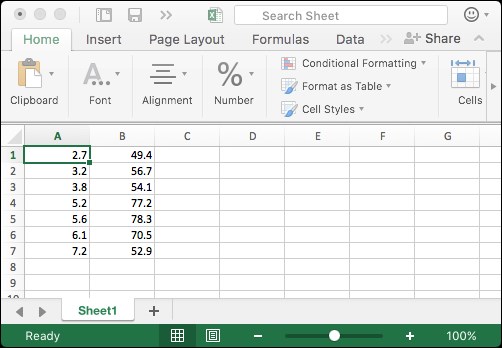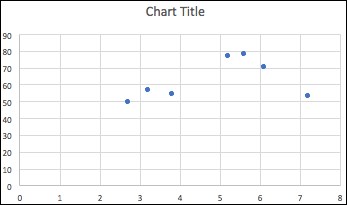Most datasets are still maintained in tabular form, as in Figure 2-12, but tables with thousands of rows and many columns are far more common than that simple example. Even when many of the data fields are text or Boolean, a graphical summary can be much easier to comprehend.
There are several different ways to represent data graphically. In addition to more imaginative displays, such as Minard's map (Figure 3-1), we review the more standard methods here.
A scatter plot, also called a scatter chart, is simply a plot of a dataset whose signature is two numeric values. If we label the two fields x and y, then the graph is simply a two-dimensional plot of those (x, y) points.
Scatter plots are easy to do in Excel. Just enter the numeric data in two columns and then select Insert | All Charts | X Y (Scatter). Here is a simple example:

Figure 3-2. Excel data
The given data is shown in Figure 3-2 and its corresponding scatter plot is in Figure 3-3:

Figure 3-3. Scatter...



